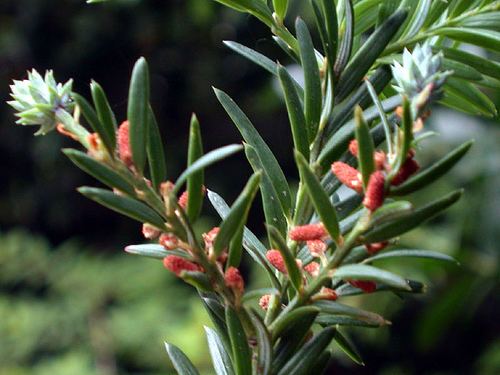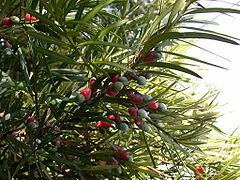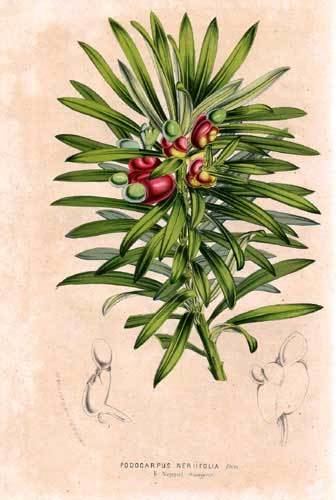Higher classification Pinales | Division Pinophyta Scientific name Podocarpaceae Rank Family | |
 | ||
Lower classifications | ||
Large podocarpaceae japan bonsai plant
The Podocarpaceae are a large family of mainly Southern Hemisphere conifers, comprising about 156 species of evergreen trees and shrubs. It contains 19 genera if Phyllocladus is included and if Manoao and Sundacarpus are recognized.
Contents
- Large podocarpaceae japan bonsai plant
- Large podocarpaceae japan bonsai plant5
- Taxonomy
- Genera
- References
The family is a classic member of the Antarctic flora, with its main centres of diversity in Australasia, particularly New Caledonia, Tasmania, and New Zealand, and to a slightly lesser extent Malesia and South America (primarily in the Andes mountains). Several genera extend north of the equator into Indochina and the Philippines. Podocarpus reaches as far north as southern Japan and southern China in Asia, and Mexico in the Americas, and Nageia into southern China and southern India. Two genera also occur in sub-Saharan Africa, the widespread Podocarpus and the endemic Afrocarpus.

Parasitaxus usta is unique as the only known parasitic gymnosperm. It occurs on New Caledonia, where it is parasitic on another member of the Podocarpaceae, Falcatifolium taxoides.
The genus Phyllocladus is sister to Podocarpaceae sensu stricto. It is treated by some botanists in its own family Phyllocladaceae.
Large podocarpaceae japan bonsai plant5
Taxonomy

The Podocarpaceae show great diversity, both morphologically and ecologically. They occur mainly in the Southern Hemisphere, with most generic variety taking place in New Caledonia, New Zealand, and Tasmania. Species diversity of Podocarpus is found mainly in South America and the Indonesian islands, the latter also being rich in Dacrydium and Dacrycarpus species.

Podocarpus L’Hér. ex Pers. (with 82 to 100 species) and Dacrydium Sol. ex Forst. (with 21 species) are the largest genera. A few genera are common to New Zealand and South America, supporting the view that podocarps had an extensive distribution over southern Gondwanaland. The breaking up of Gondwanaland led to large-scale speciation of the Podocarpaceae.

Until 1970, only seven Podocarpaceae genera were recognized: Podocarpus, Dacrydium, Phyllocladus, Acmopyle, Microcachrys, Saxegothaea, and Pherosphaera. All four of the African species fell under Podocarpus – P. falcatus, P. elongatus, P. henkelii, and P. latifolius. Taxonomists divided Podocarpus species into eight categories based on leaf anatomy: Afrocarpus J. Buchholz & N. E. Gray, Dacrycarpus Endl., Eupodocarpus Endl., Microcarpus Pilg., Nageia (Gaertn.) Endl., Polypodiopsis C. E. Bertrand (non Polypodiopsis Carriére nom. rej. prop. 6), Stachycarpus Endl. and Sundacarpus J. Buchholz and N. E. Gray.
Studies of embryology, gametophyte development, female cone structure, and cytology led to the belief that the eight categories probably deserved generic status. Researchers agreed on the need to recognize "fairly natural groupings which prove to have good geographic and probably evolutionary cohesion" and took the necessary steps to raise each section to generic status.
In 1990, a treatment of the Podocarpaceae recognized 17 genera, excluding Phyllocladus from the family, while recognizing Sundacarpus, but not Manoao. In 1995, Manoao was segregated from Lagarostrobus, based on morphological characters. In 2002, a molecular phylogenetic study showed Sundacarpus is embedded in Prumnopitys and the monophyly of Lagarostrobos is doubtful if Manoao is included within it. More recent treatments of the family have recognized Manoao, but not Sundacarpus.
